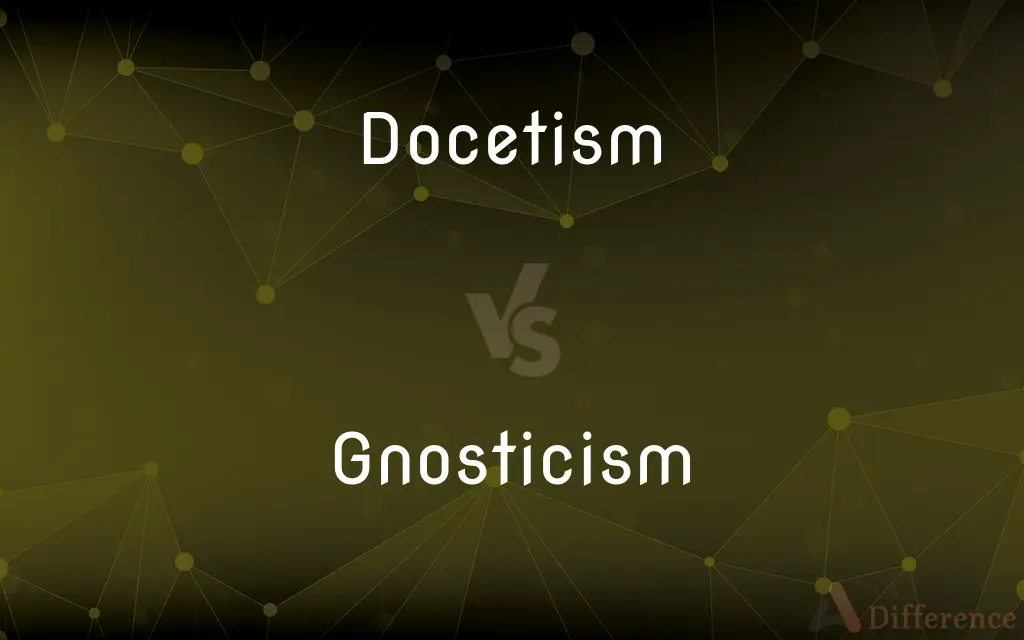Docetism vs. Gnosticism — What's the Difference?

Difference Between Docetism and Gnosticism
ADVERTISEMENT
Compare with Definitions
Docetism
In the history of Christianity, docetism (from the Koinē Greek: δοκεῖν/δόκησις dokeĩn "to seem", dókēsis "apparition, phantom") is the heterodox doctrine that the phenomenon of Jesus, his historical and bodily existence, and above all the human form of Jesus, was mere semblance without any true reality. Broadly it is taken as the belief that Jesus only seemed to be human, and that his human form was an illusion.
Gnosticism
Gnosticism (from Ancient Greek: γνωστικός, romanized: gnōstikós, Koine Greek: [ɣnostiˈkos], 'having knowledge') is a collection of religious ideas and systems which originated in the late 1st century AD among Jewish and early Christian sects. These various groups emphasised personal spiritual knowledge (gnosis) above the orthodox teachings, traditions, and authority of the church.
Docetism
The belief, especially associated with the Gnostics, that Jesus had no human body and only appeared to have died on the cross.
Gnosticism
The doctrines of various religious sects flourishing especially in the 2nd and 3rd centuries AD in the Near East, teaching that the material world is the imperfect creation of a subordinate power or powers rather than of the perfect and unknowable Divine Being, and that the soul can transcend material existence by means of esoteric knowledge. The Mandaean religion preserves one system of Gnostic belief.
Docetism
(Christianity) The doctrine of the Docetes, that Jesus only appeared to have a physical body and was ultimately of celestial substance.
ADVERTISEMENT
Gnosticism
The system of philosophy taught by the Gnostics.
Docetism
The doctrine of the Docetæ.
Gnosticism
A religious orientation advocating gnosis as the way to release a person's spiritual element; considered heresy by Christian churches
Docetism
The heretical doctrine (associated with the Gnostics) that Jesus had no human body and hissufferings and death on the cross were apparent rather than real
Share Your Discovery

Previous Comparison
Anther vs. Stigma
Next Comparison
Foreslash vs. Slash













































